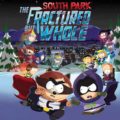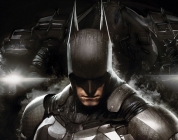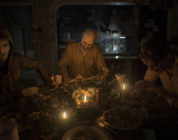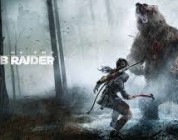Developer: Ubisoft San Francisco
Publisher: Ubisoft
Platform Reviewed: PlayStation 4
Release Date: October 17, 2017
Acquired via: Purchase by Reviewer
As a fan of South Park: The Stick of Truth, and of the TV series that birthed it, this game was a no-brainer. I just refused to buy it at launch because I’m old and gruff and hate everything. Now that I have it, I am very pleased. With exceptions.
South Park: The Fractured but Whole is the follow-up to 2014’s South Park: The Stick of Truth. It almost literally picks up where the original left off, with the whole Lord of the Rings-style theme. But that’s quickly replaced with a superhero-based theme that mimics the whole MCU aesthetic.
Eric Cartman, as always, shifts the theme for selfish reasons, and the kids of South Park oblige. As the New Kid, you’re suddenly reduced from “King Douchebag” to just another superhero named “Butthole”. After selecting your class, you’re once again thrust into South Park with a new identity and new questline.
Many of the things that endeared me to the original game are present in the sequel. This is an RPG that’s deeply entrenched in South Park lore. Everywhere you go, there are tons of references to not only the cartoon series but the original game. Even small details are preserved in continuity. Walking into Cartman’s original Koopa Keep, the same KFC bucket and Antonio Banderas sex doll are present. That’s not terribly important, but I love the attention to detail. Since South Park’s creators, Matt Stone and Trey Parker, were involved in making this game, you’d expect that the continuity and aesthetic would mimic the cartoon series.
This sequel also mixes up the original’s combat mechanics. Whereas the original game stuck to the typical turn-based mechanics in JRPGs, The Fractured but Whole adds a bit of strategy. Combat takes place in a 2D grid, more akin to games like Final Fantasy Tactics and Vandal Hearts. Like those titles, character placement and makeup can spell the difference between success and failure. Unlike the aforementioned games, the mechanics are simpler. There are fewer pratfalls; terrain only matters in isolated instances, and the majority of the encounters take place on a flat battlefield.
Boss encounters, however, add extra elements to the battles, and they’re done in typical South Park fashion. One battle has you taking care of obstacles as a way of engaging a boss. Others have you pushing forward, trying to avoid a boss. These mechanics inject creativity into fights that become tedious after some time.
The exploration, however, is similarly intact. This is an open-world RPG that keeps its aesthetic intact. After over 20 seasons, South Park has developed a lore that fans stick to. All of the elements – modified to embrace the new game’s shift in theme – are thankfully intact. Even minor elements that were established in the show are kept intact in the game. It’s obvious that Stone & Parker have worked hard to maintain the show’s elements.
It’s when I got into the heart of the game that it starts to suffer.
Part of that is because although the new combat system is refreshing, it gets tired quickly. How quickly it gets tired depends on the difficulty setting chosen at the start. And that’s where the influences of the source material may irk some.
As before, South Park aesthetics jump in. When you begin a game, you’re allowed to customize your avatar. Here, they take a typical South Park tack and bind your difficulty to the color of your skin. The darker your skin color, the harder the difficulty. Because I’m looking for a challenge – and because I’m a trophy who…err, hunter – I chose the darkest, and most difficult, skin color.
I’m not ragging on the publishers or the developers on this choice. When you play a South Park game, you expect the worst. But ultimately, the skin color choice, combined with the combat difficulty choice, ultimately affected the early phases of the game in my playthrough. The rest of the game, if you’re familiar with JRPG mechanics, is child’s play.
Past that, the game is nothing more than a retread of The Stick of Truth. It’s still great for fans of the series like me. In addition to the series’ main characters, ancillary characters like Towelie and PC Principal make appearances. The mechanics that they’re involved in are accurate to the series’ lore and add a bit of meat to the game’s bones. I also appreciate small touches, like battles being put on hold when a car is coming. But that’s not enough to add serious playability to the game,
Worse yet, like the original, once you finish South Park: The Fractured but Whole, there is no real incentive to replay it. There are plenty of open-world style collection quests that trophy who…err, hunters, like me will want to grab. Past that, the game has no real replay value.
For South Park fans and RPG aficionados, however, that will not detract from their enjoyment of the game. This game is perfectly designed to grab both of those demographics by the nethers. Since I count as a fan of both, I thoroughly enjoyed my playthrough. But I recognize that the gameplay and lack of replayability – as well as the source material itself – will turn off some.
If you’re looking for an authentic South Park experience, The Fractured but Whole is perfect





